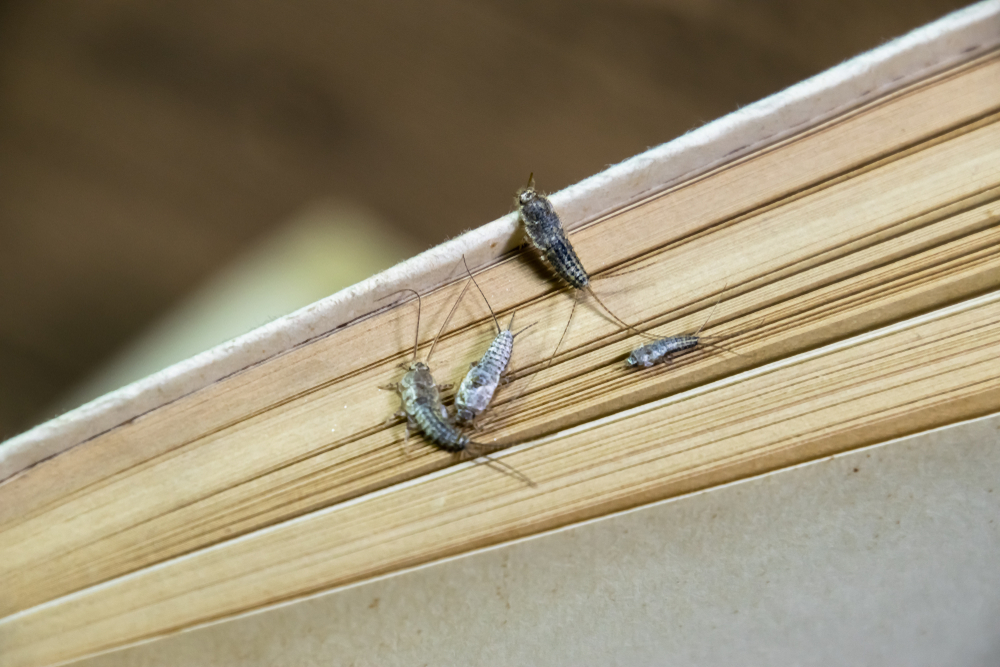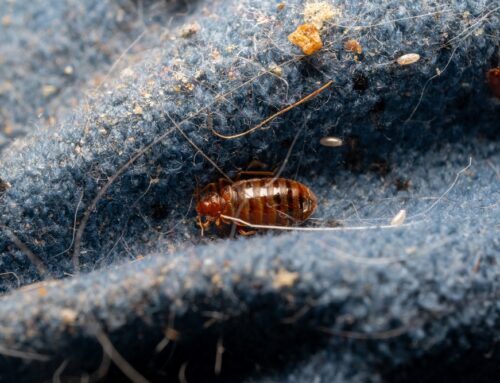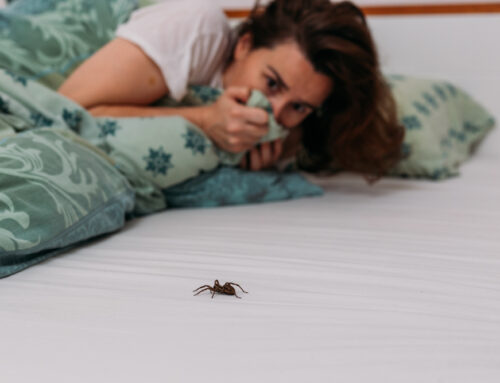What Are Silverfish and Why Are They in Your Home?
You’re grabbing a book from the back of a shelf or moving a box in your closet, and suddenly, a silvery, wriggling insect darts away at lightning speed. If that’s happened to you, chances are you’ve encountered a silverfish. These creepy, metallic-looking pests are harmless to humans but damaging to your belongings—and they’re tough to catch.
At Southwood Pest Control, we’ve helped homeowners throughout Orange County tackle silverfish infestations and protect their homes from future invasions. Although they don’t bite or spread disease, silverfish are unwanted guests that thrive in dark, damp environments, such as bathrooms, basements, and attics. Their appetite for paper, glue, and even clothing makes them more than a simple nuisance.
In this guide, we’ll walk you through the most effective ways to prevent and control silverfish in your home, using both natural and professional strategies that deliver results.
Understanding Silverfish Behavior and Habits
What Do Silverfish Look Like?
Silverfish are wingless insects, typically around ½ inch to ¾ inch in length. Their bodies are elongated and tapered, giving them a fish-like appearance. They have long antennae and move with a distinctive wriggling motion.
Where Do They Live?
Silverfish love moist, dark, and undisturbed areas. Common hiding spots include:
- Bathrooms (under sinks, behind toilets)
- Basements and crawlspaces
- Attics and storage rooms
- Inside cardboard boxes
- In bookshelves, wallpaper seams, and behind baseboards
What Do They Eat?
Silverfish feed on carbohydrates, especially sugars and starches. Their preferred food includes:
- Paper and cardboard
- Glue and adhesives (like those in books or wallpaper)
- Hair and dead skin cells
- Dried pasta, cereal, and grains
- Cotton, linen, and other fabrics
Signs of a Silverfish Infestation
- Seeing Live Silverfish
These pests are nocturnal, but they may be spotted if you move objects or disturb their hiding places. - Yellow Stains and Droppings
Silverfish excrete small black pellets and may leave yellowish stains on fabric, wallpaper, or paper. - Damaged Items
Look for chewed edges or irregular holes in books, documents, clothing, and pantry items.
How to Prevent Silverfish in Your Home
- Reduce Humidity
Silverfish need high humidity to survive. Use a dehumidifier in areas prone to dampness, such as basements and bathrooms. Ventilate spaces by opening windows or using exhaust fans. - Eliminate Clutter
Clear out old magazines, cardboard boxes, and unused linens—store items in plastic containers instead of cardboard, especially in storage rooms and garages. - Seal Entry Points
Inspect your home for small cracks, crevices, and gaps around baseboards, windows, and doors. Use caulk to seal them and keep silverfish from sneaking in. - Store Food Properly
Store dry goods, such as flour, cereal, and pasta, in airtight containers. Wipe down pantry shelves and avoid leaving food out overnight. - Clean Regularly
Vacuum carpets, behind furniture, and around baseboards to remove food particles, dust, and eggs. Don’t forget to clean behind toilets and under sinks. - Repair Leaky Pipes
Since silverfish thrive in moisture, fixing leaky faucets and pipes is crucial. Check under sinks and in crawlspaces for signs of dampness.
Natural Ways to Control Silverfish
- Diatomaceous Earth (Food Grade)
Sprinkle it around areas where you suspect silverfish activity. It damages their exoskeleton and causes them to dehydrate. Be sure to reapply after vacuuming or exposure to moisture. - Essential Oils
Silverfish dislike strong scents, such as lavender, cedarwood, and citrus. Mix a few drops of essential oil with water and spray in closets, baseboards, and dark corners. - Cloves and Cedar Shavings
Place cloves or cedar chips in small breathable sachets and leave them in closets, drawers, or bookshelves. The smell repels silverfish naturally. - Homemade Silverfish Traps
Wrap a glass jar in masking tape and place a piece of bread inside. Silverfish can climb the tape but not the smooth interior of the jar, effectively trapping them.
The Limits of DIY Silverfish Control
While natural methods and prevention strategies are effective for small-scale issues, they may not be sufficient if an infestation is already established. Silverfish hide in walls, baseboards, and flooring, making it difficult to reach and eliminate them without expert tools and experience.
If you continue to see silverfish despite your best efforts, it’s time to bring in professional help.
Why Choose Southwood Pest Control
- Over 50 Years of Experience
We are familiar with the local climate, pest patterns, and common entry points for silverfish in homes in Orange County. - Customized Treatments
We tailor each treatment plan to your specific infestation and home layout, using a combination of baiting, residual sprays, and exclusion techniques. - Family and Pet-Safe Products
Our treatments are carefully selected to be effective yet safe for children and pets. - Expert Technicians
Our trained professionals identify hiding spots and implement treatments that go beyond surface-level solutions. - Long-Term Protection
We provide recommendations and follow-up visits to ensure your home stays silverfish-free.
What to Expect During a Silverfish Control Visit
Step 1: Free Inspection
Call Southwood Pest Control at (800) 780-7773 or visit our website to schedule your free home inspection. We’ll assess the extent of your silverfish problem.
Step 2: Personalized Treatment Plan
Our technician will create a strategy that may include:
- Spot treatments in problem areas
- Application of insect growth regulators
- Crack and crevice treatments
- Humidity and moisture management recommendations
Step 3: Prevention Advice and Follow-Up
We’ll offer actionable tips for long-term prevention and schedule follow-up visits if needed.
Maintaining a Silverfish-Free Home
- Use dehumidifiers in damp rooms.
- Store papers and fabrics in sealed bins.
- Fix plumbing leaks promptly.
- Avoid overwatering houseplants.
- Regularly inspect attic and basement storage areas.
By staying vigilant and acting early, you can prevent silverfish from becoming a larger issue.
Keep Silverfish Out for Good
Silverfish may be small, but they can cause significant problems for your paper goods, fabrics, and peace of mind. Whether you’re dealing with a few scattered sightings or a more serious infestation, you have options.
From natural repellents and humidity control to professional-grade treatments, Southwood Pest Control offers proven solutions to keep your home silverfish-free.
Call us today at (800) 780-7773 or visit our website to schedule your free inspection. Let’s protect your home together.
Frequently Asked Questions
- Are silverfish harmful to humans or pets?
No, silverfish don’t bite or carry disease. However, they can damage books, wallpaper, clothing, and dry food items. - Why do silverfish keep appearing in my bathroom?
Bathrooms tend to be warm and humid, creating the perfect environment for silverfish. Leaky pipes and infrequent cleaning can exacerbate the problem. - How long does it take to eliminate a silverfish infestation?
Depending on the severity, treatment can take a few days to several weeks. Ongoing prevention is essential to keep them from returning.







